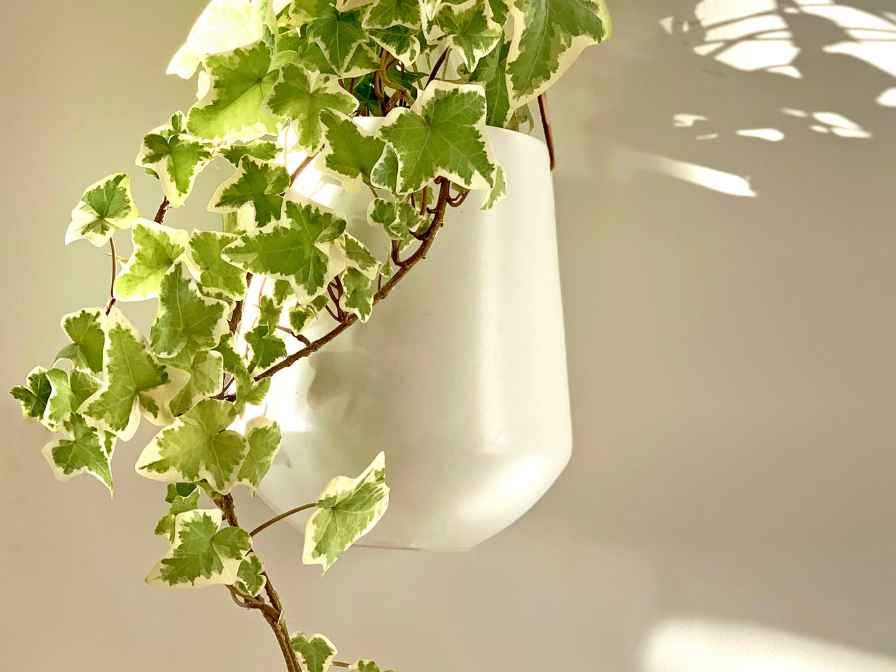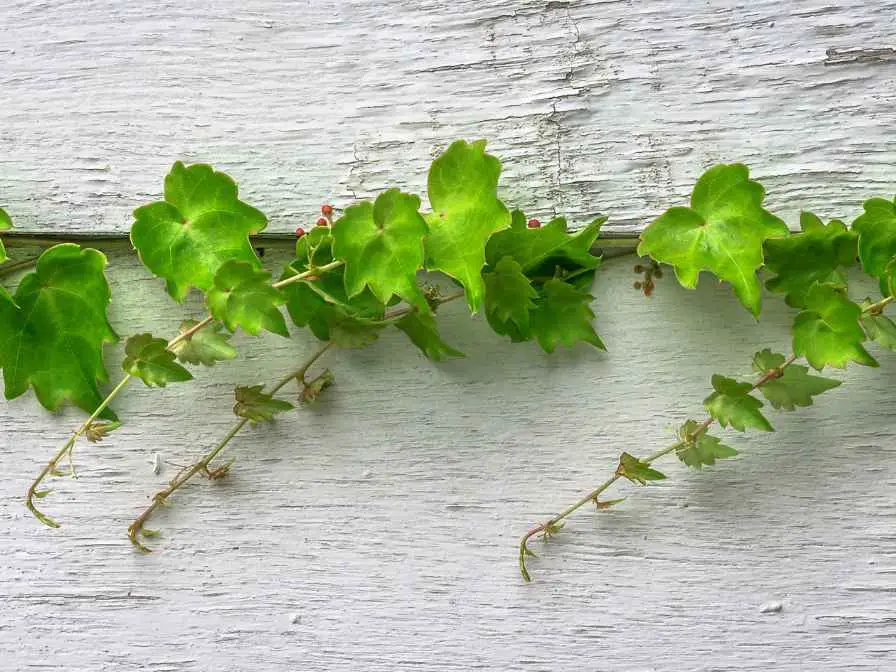Looking for the plant a plant that requires low maintenance and can climb walls and trees. You got it right, it’s the ivy plant. You might be wondering how to start a new ivy plant. well, we are going to tell you and suggest to you some right processes to follow.

Ivy plant
Ivy, also known as Hedera, is a popular climbing plant that belongs to the Araliaceae family. It is known for its distinctive, glossy leaves and its ability to quickly cover walls, trellises, and fences with its vigorous growth.
There are many species and cultivars of ivy, with varying leaf shapes, sizes, and colors, making it a versatile and attractive addition to any garden or indoor space. Ivy plants are native to Europe, Asia, and North Africa. They have been cultivated for centuries for their ornamental and medicinal properties.
Ivy is commonly grown as a ground cover or a climbing vine, and it can grow up to 100 feet or more in length. The leaves of ivy are typically dark green, although some cultivars have variegated leaves with shades of cream, yellow, or white
The leaves are often lobed or serrated, and they can have a leathery texture. Ivy produces small, greenish-yellow flowers in the fall, followed by clusters of small, round berries that are usually black or dark purple.
In addition to its ornamental value, ivy has been used for various medicinal purposes. It has been believed to have anti-inflammatory, expectorant, and antispasmodic properties. And has been used in traditional herbal medicine to treat respiratory ailments, coughs, and colds
However, it is important to note that ivy can be toxic if ingested, and caution should be exercised when using it for medicinal purposes. Ivy is also an important plant for wildlife, providing shelter and food for birds and insects, and supporting biodiversity in gardens and natural areas.
Benefits of Planting Ivy Plant
Planting ivy can offer several benefits in various settings, including:
Aesthetic Appeal
Ivy is known for its lush and glossy leaves, which can add a touch of natural beauty to gardens, landscapes, and indoor spaces. They can be used as a ground cover to create a dense green carpet, or as a climbing vine to cover walls, trellises, and fences, providing a visually appealing green backdrop.
Ivy is also available in different leaf shapes, sizes, and colors, allowing for creative and versatile landscaping designs.
Erosion Control
The vigorous growth of ivy and its ability to spread quickly make it an effective plant for erosion control. Additionally, when planted on slopes or hillsides, ivy can help stabilize the soil and reduce the risk of erosion caused by heavy rain or wind.
Its dense root system can help bind the soil together, reducing the runoff of water and preventing soil erosion.
Wildlife Habitat
Ivy can provide valuable habitats for wildlife, including birds, insects, and small mammals. The dense foliage of ivy can offer shelter, nesting sites, and food sources for birds, such as sparrows and robins, as well as for insects like bees and butterflies.
Ivy berries, although toxic to humans, can be a food source for birds and small mammals during the winter months when other food sources may be scarce.
Low Maintenance
Ivy is a relatively low-maintenance plant, requiring minimal care once established. It is drought-tolerant and can adapt to a wide range of soil conditions, making it a hardy plant that can thrive in different environments.
Ivy can also help suppress weed growth, reducing the need for additional maintenance efforts, such as weeding and mulching.
Air Purification
Like many other plants, ivy has been found to have air-purifying properties. It can help filter out pollutants, such as volatile organic compounds from the air, which can contribute to improved indoor air quality when grown indoors.
This makes ivy a suitable choice for indoor spaces, such as offices or homes, where it can help promote a healthier living environment.
Privacy and Noise Reduction
When used as a climbing vine, ivy can provide a natural privacy screen, helping to block out unwanted views or reduce noise from neighboring areas. The dense foliage of ivy can act as a barrier, creating a green and peaceful retreat in outdoor spaces.
It’s worth noting that ivy can also have some drawbacks, such as its invasive potential in some regions, and its ability to cling to and potentially damage buildings or structures. So choose this plant wisely.
How to Start a New Ivy Plant

Here are the basic materials you need to start a new ivy plant.
– Ivy cutting (6-8 inches long with 2-3 leaves)
– Clean scissors or pruning shears
– Pot or container with drainage holes
– Well-draining potting mix
– Water
– Rooting hormone (optional)
Choose a Healthy Ivy Cutting
Look for a healthy ivy plant from which to take a cutting. Select a stem that is about 6-8 inches long with 2-3 leaves. The cutting should be taken from a non-flowering stem and should have healthy, green leaves.
Prepare the Cutting
Use clean scissors or pruning shears to make a clean cut just below a leaf node, which is the point where the leaves emerge from the stem. Remove any leaves from the bottom 1-2 inches of the cutting to create a bare stem that will be inserted into the potting mix.
Apply Rooting Hormone
If desired, you can dip the cut end of the ivy cutting into rooting hormone powder or gel, which may help promote root development. Shake off any excess hormones before proceeding to the next step.
Plant the Cutting
Well-draining potting mix should be poured into a pot or container, leaving approximately one inch at the top empty. Put the cut end of the ivy cutting, with the naked stem exposed, into the potting mixture, burying it approximately 1 to 2 inches deep. To secure the cutting, lightly push some potting soil around it.
Water the Cutting
Water the cutting thoroughly but avoid over-watering, as ivy prefers slightly moist soil rather than soggy conditions. Every time the top inch of soil feels dry to the touch, water the potting mix to keep it equally moist but not soggy.
Provide Proper Care
Place the pot with the ivy cutting in a well-lit area, but avoid direct sunlight, as it can scorch the leaves. Ivy prefers bright, indirect light. Keep the temperature in the range of 60-75°F for optimal growth. You can also mist the leaves with water occasionally to increase humidity around the cutting.
Monitor and Wait for Roots to Develop
It may take several weeks for the ivy cutting to develop roots. During this time, monitor the moisture level of the potting mix and make sure it doesn’t dry out completely. Be patient and avoid disturbing the cutting, as it takes time for the roots to form and establish.
Transplanting
Once the ivy cutting has developed a good root system, and you see new growth emerging, it’s ready to be transplanted into a larger pot or directly into the ground, depending on your intended planting location. Be sure to handle the new plant carefully by the leaves or root ball to avoid damaging the fragile roots.
In short, the ivy plant is a great choice for indoor settings. You just have to get the right cutting, grow its roots and plant it. It should be known to you that this plant is invasive. It can grow a lot and can interfere with other plants. Prune it to control it and keep it in shape.
FAQs
Is Ivy a good indoor plant?
Yes, ivy can be a good indoor plant, as it is known for its ability to tolerate low light conditions and can thrive in indoor environments. It can be grown in a hanging basket, as a trailing plant, or trained to climb a trellis or wall.
However, it’s important to provide proper care, including adequate light, well-draining soil, and regular watering, to ensure its health and prevent issues such as overgrowth or pests.
Does Ivy need a lot of water?
Ivy prefers slightly moist soil, but it’s important not to over-water it. Over-watering can lead to root rot and other issues. It is advised to wait until the top inch of soil has dried between the two watering, after which you should water well and let any extra water drain from the pot.
Be sure to check the moisture level of the soil regularly and adjust your watering schedule accordingly, based on the specific environmental conditions and needs of your ivy plant.
Can Ivy be grown outdoors?
Yes, ivy can be grown outdoors in suitable climates. Ivy is known for its ability to climb and cover walls, trellises, and fences, and can add a lush and verdant look to outdoor spaces. However, it’s important to consider the specific type of ivy and its invasive potential in your area, as some ivy species can become invasive and crowd out native plants.
It’s also important to provide proper care, including well-draining soil, adequate light, and regular maintenance to prevent overgrowth and ensure the health of your outdoor ivy plants.
